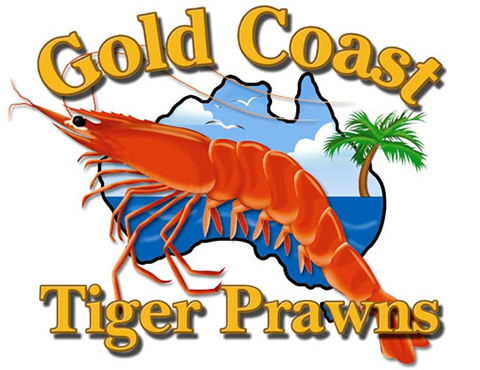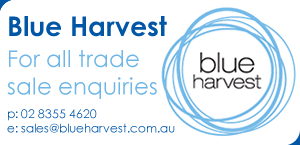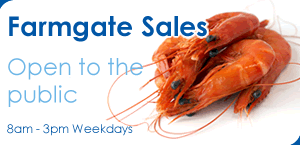Sustainability
The challenge aquaculture shares with other food production methods is creating growth that is sustainable to the environment. Aquaculture production compares favourably to production of chickens, pork or beef because fish convert a greater proportion of the food they eat into body mass and therefore the environmental demands per unit of protein produced are lower.
Aquaculture’s impact of the environment can be measured broadly by farm inputs and outputs.
- Inputs: amount of land, water, feed, fertilizers and energy required and;
- Outputs: nitrogen, phosphorus and carbon dioxide.
Steps that are being undertaken to reduce aquacultures impact on the environment include:
Domestication programs
Selective breeding of traits to develop more productive strains: faster growing, disease resistant, improved flesh yield.
One example is breeding strains that covert more of the food they eat into edible body mass.
In 2010 Gold Coast Marine Aquaculture was the first Black Tiger Prawn farm in the world to fully stock with juveniles from domesticated brood stock.
The domestication program commenced in 1999 and was a collaboration between GCMA, Australia’s Commonwealth Scientific and Industrial Research Organisation (CSIRO), Queensland Department of Employment, Economic Development and Innovation (QDEEDI), Australian Institute of Marine Science (AIMS) and received funding from the Fisheries Research and Development Corporation (FRDC).
The benefits from this research program are endless, some are listed below.
- Reducing dependence on wild caught stock allows the wild population to grow unchallenged and helps our environment.
- The ability to stock ponds on time, every time (remove), without an eye on the season or weather.
- To grow product faster and more cost effectively than ever before.
- To use genetics to literally have stud lines and use true farming practices in product development.
- To have control over the health status of the farm at all times by not bringing in wild untested populations.
- To be able to stock less to achieve the same yield.
- A reduction of Green House gas emissions, as less time requires less power
Reducing dependency on fish meal and fish oil in the diet;
Decrease dietary fish meal and fish oil inclusion in aquaculture feeds and limiting their use to starter, brood-stock and finisher feeds.
Australia is a world leader in feed research. Gold Coast Marine Aquaculture works closely with research agencies and feed companies to provide practical field results. The percentage of fish meal and fish oil in a prawn’s diet has successfully been reduced in recent years.
Food Conversion Ratio (FCR) is a measure of an animal‘s efficiency in converting feed mass into increased body mass.
Black Tiger Prawns have a FCR of around 1.5, which means that 1.5kg of feed produce 1kg of live weight prawns. Sheep and cattle require approximately 8kg to produce 1kg live weight; poultry require 2 to 4kg to produce 1kg live weight.
Selective breeding of strains that perform well on lower protein diets.
Domestication of Black Tiger Prawns will further reduce the FCR. Increased substitution of fish meal and fish oil with plant products like soy will lower the prawns’ average trophic level (the position it occupies in the food chain) and result in a lower FCR.
Avoid aquaculture sites in ecologically sensitive areas and areas high in sequestered carbon like mangroves, seagrass, wetlands and tropical deforestation.
Sensitive habitats are protected in Australia and cannot be removed.
Improving energy efficiency throughout the production and value chains, example pumping water, aeration, post-harvest processing and freight.
Prawn farms use pumps to move water and aerators in ponds
GCMA has several current strategies to help reduce electrical consumption mainly:
a) An innovative system of reducing loads on pump motors that automatically reduce as head level decrease
b) A change to the frame of paddle wheels to allow for a two horse power motor and not three. This has effectively reduced power to this form of aeration by a third
c) The purchase of a 0.75 hp submerged unit as opposed to the “normal” 2.5hp model that may be used in conjunction with paddle wheels
GCMA are also part way to installing a hertz reduction system that will work at times when aeration is less critical (day light hours) Paddle wheels will then run at a slower speed as the normal 50 hertz motors spin with a 30 hertz input.
Select fish that that have more limited demand for high quality marine lipids and protein, example Tilapia
Increased substitution of fish meal and fish oil with plants products like soy will lower the prawns’ average trophic level (the position it occupies in the food chain) and result in a lower FCR.
Deal carefully with organically enriched fish pond sediments, example inclusion of settlement ponds and sufficient periods to dry out ponds.
It is the responsibility of prawn farms to work towards having a neutral impact on their surrounding environment. A main focus of the Environmental Protection Agency (EPA) is the levels of Total Suspended Solids (TSS) leaving the prawn farm. GCMA has built a settlement/treatment system that covers 16 hectares of ponds; this is a 36% to 64% ratio of treatment versus production.
Fortnightly tests analysed by a third party NATA laboratory show that the TSS discharged is actually less than the intake.





